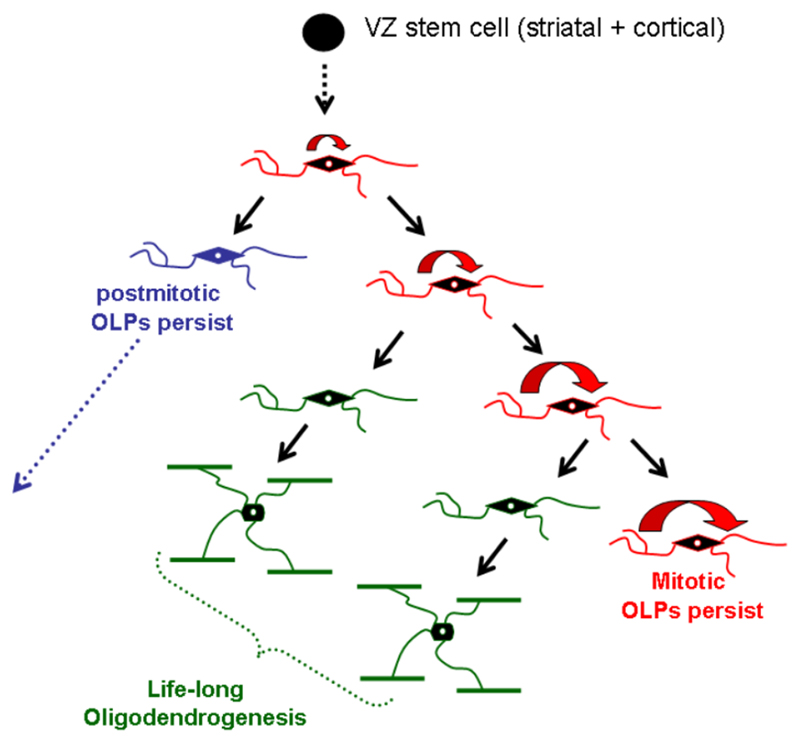Figure 6.
The birth and behaviour of NG2 glia. From data presented in this paper and Kessaris et al., (2006), we conclude that adult forebrain OLPs/ NG2 cells are initially derived from embryonic VZ stem cells located in both the dorsal (cortical) and ventral (LGE/MGE) telencephalon. In this paper we show that their embryonic origin does not have any bearing on their mitotic activity as adult NG2 cells. A population of quiescent NG2 cells, comprising approximately half of all NG2 cells, appears some time before the end of the first postnatal week and persists throughout life. The function of these cells is unknown. The other half of the NG2 cell population remains in cycle throughout life, although their cell cycle length increases with age (e.g. from ~2 days at P6, to ~70 days at 8 months and >150 days at 18 months in the cortex). One major function of the proliferating OLPs is to generate new oligodendrocytes throughout life. However, the rate of oligodendrogenesis slows progressively with age, roughly in parallel with the decelerating cell cycle.

